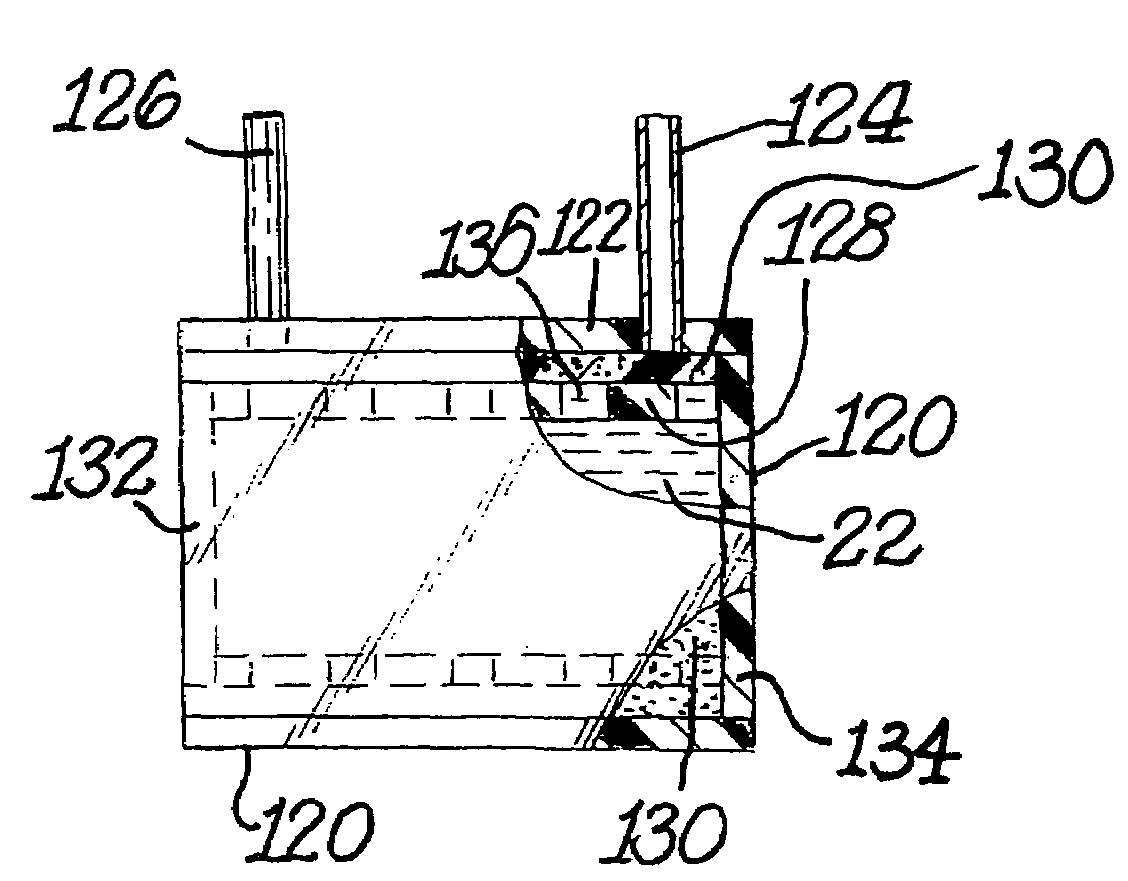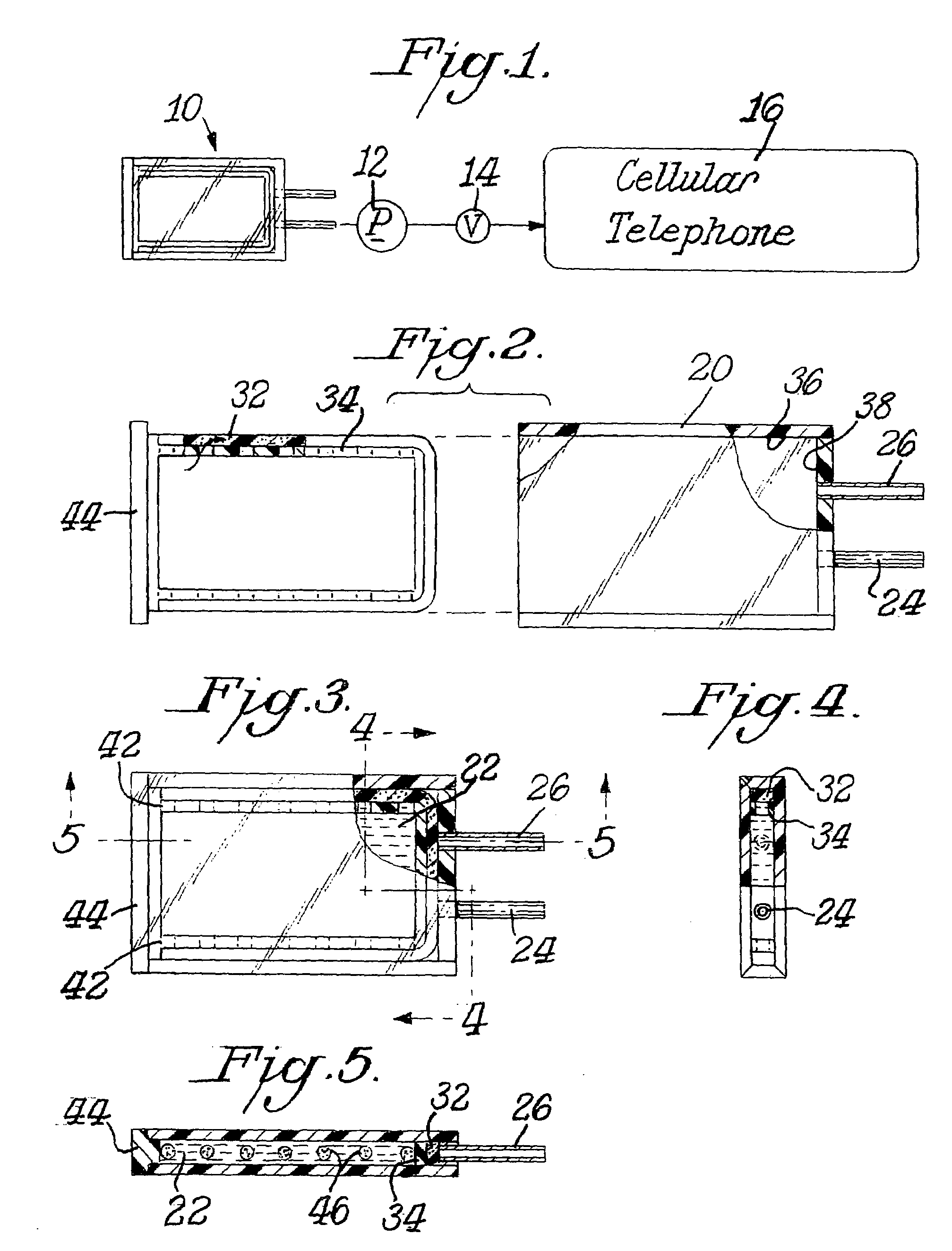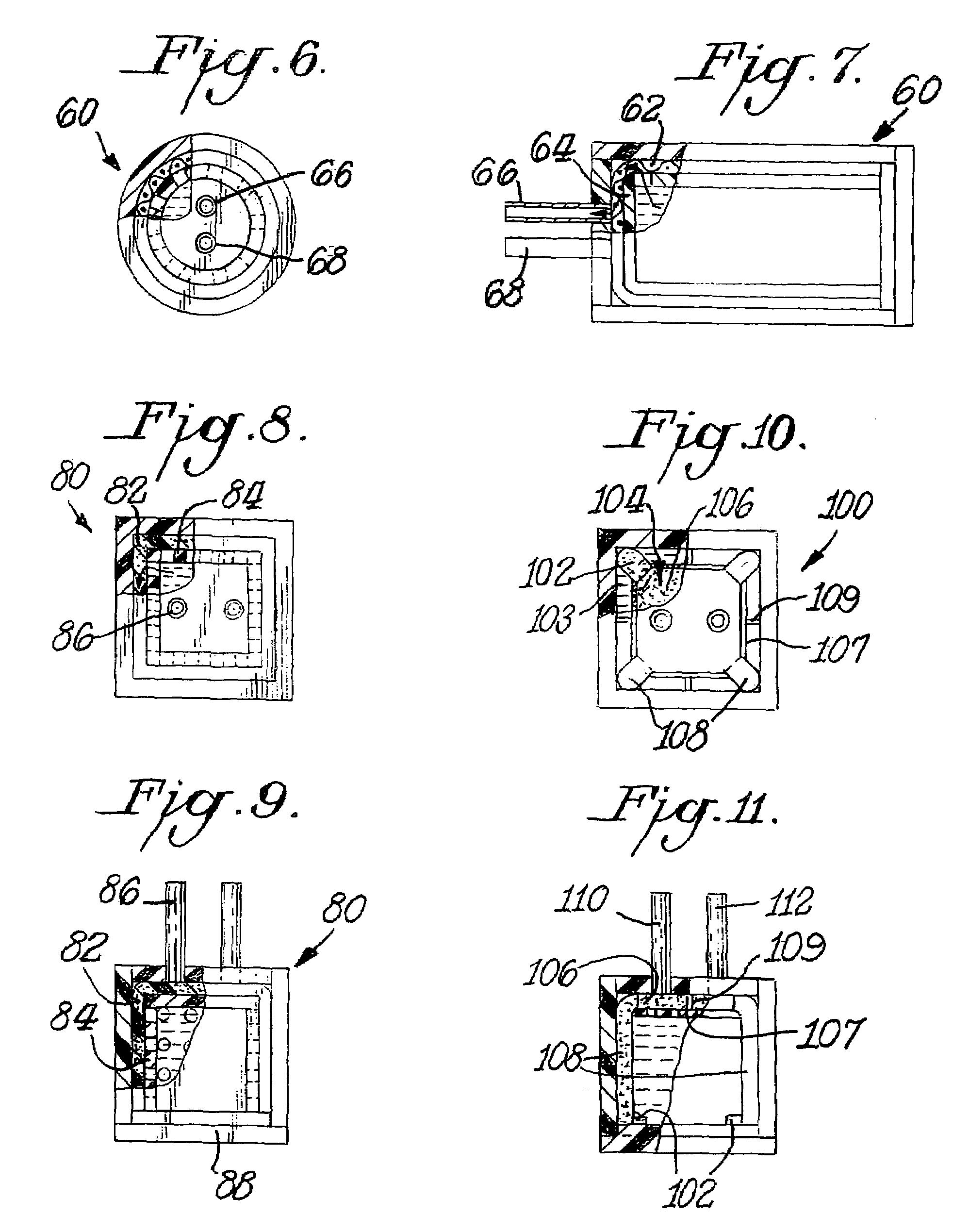Orientation independent liquid fuel reservoir
a liquid fuel reservoir and orientation independent technology, applied in the field of orientation independent liquid fuel reservoirs, can solve the problems of short circuit in the cell, achieve the effect of reducing or eliminating the pumping requirements of the liquid fuel cell device, weight reduction and/or cost savings
- Summary
- Abstract
- Description
- Claims
- Application Information
AI Technical Summary
Benefits of technology
Problems solved by technology
Method used
Image
Examples
example 1
[0196]An experiment was conducted to determine the removal of non-volatile residues (NVR), as impurities, from methanol by the following impurities scavenging substances: granulated carbon (203-67), granulated carbon (203-75A), Norit Darco G-60 (203-75B) and Calgon carbon (203-75D). NVR had been extracted from a piece of foam into the methanol to form a methanol solution containing NVR to be used in the impurities removal experiment. Separately for each of the above impurities scavenging substances, approximately 150 ml of the methanol solution containing NVR was placed in a beaker with a magnetic stir bar and the impurities scavenging substance was added in the amount shown in the table below, mixed for at least 24 hours, subjected to filtration if necessary to remove the impurities scavenging substance, distilled to dryness and weighed to determine the amount of NVR remaining. A control run was performed to determine the weight percent of NVR in the methanol not exposed to the imp...
example 2
[0198]A liquid fuel reservoir of the invention containing a 90-pore, reticulated ether foam felted to firmness 7 as the wicking structure was filled with clean methanol and connected to a syringe pump and pressure transducer. The syringe-pump was set to dispense 10 mL / hr and the pressure flow data were recorded until air entered the system. Negative pressure data were plotted over time (see FIG. 79A with the reservoir standing up, i.e. with both inlet and outlet oriented at the top of the reservoir, and FIG. 80A with the reservoir upside down, i.e. with both inlet and outlet oriented at the bottom of the reservoir).
[0199]In a separate experiment, the liquid fuel reservoir containing a 90-pore, reticulated ether foam felted to firmness 7 as the wicking structure was filled with clean methanol and connected to a syringe pump and pressure transducer. The syringe-pump was set to withdraw 10 mL / hr and the pressure flow data were recorded until air entered the system. Positive pressure da...
PUM
| Property | Measurement | Unit |
|---|---|---|
| density | aaaaa | aaaaa |
| density | aaaaa | aaaaa |
| density | aaaaa | aaaaa |
Abstract
Description
Claims
Application Information
 Login to View More
Login to View More - R&D
- Intellectual Property
- Life Sciences
- Materials
- Tech Scout
- Unparalleled Data Quality
- Higher Quality Content
- 60% Fewer Hallucinations
Browse by: Latest US Patents, China's latest patents, Technical Efficacy Thesaurus, Application Domain, Technology Topic, Popular Technical Reports.
© 2025 PatSnap. All rights reserved.Legal|Privacy policy|Modern Slavery Act Transparency Statement|Sitemap|About US| Contact US: help@patsnap.com



